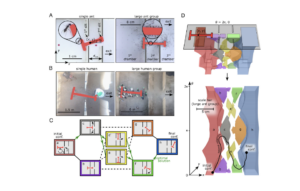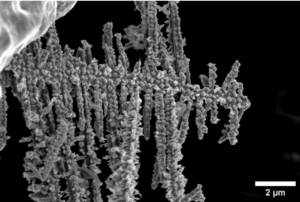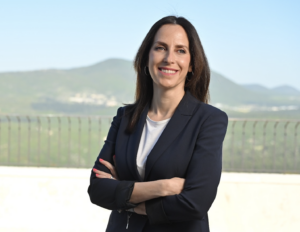Le Technion (Israël) développe une technologie pour purifier les eaux usées contaminées par le Formaldéhyde

[:fr]
Le formaldéhyde est connu comme le produit chimique dans lequel grenouilles et autres petits animaux sont conservés pour la dissection. En fait, il est largement utilisé dans l’industrie, notamment dans la fabrication d’adhésifs et de résines, ainsi que dans les industries du bois, du papier et du textile.
Agent antimicrobien utilisé pour tuer la bactérie Salmonella, il est utilisé aux États-Unis pour fabriquer des aliments pour animaux. Mais – considéré comme l’un des polluants intérieurs les plus problématiques – il s’agit d’un polluant cancérigène qui peut pénétrer dans notre corps en l’inspirant, en le mangeant et en le buvant.
Bien entendu, il est interdit de rejeter ces eaux usées dans l’environnement. C’est pourquoi de grands efforts sont déployés pour les éliminer en toute sécurité. L’élimination du formaldéhyde dans l’eau est essentielle pour prévenir la contamination des eaux souterraines et du sol. Cependant, comme le retirer de l’eau coûte très cher, certaines entreprises conservent simplement l’eau contaminée dans des barils, dans l’attente du jour où une solution satisfaisante sera trouvée.
Des chercheurs de l’Institut de technologie Technion-Israël de Haïfa ont mis au point une technologie innovante et brevetée pour éliminer le formaldéhyde de l’eau. Les recherches ont été conduites par le Dr Adi Radian et le doctorant Yael Zvulunov de la Faculté de Génie Civil et Environnemental, en collaboration avec le professeur Ayelet Fishman et le Dr Zohar Ben-Barak Zelas de la Faculté de Biotechnologie et du Génie Alimentaire. L’étude du Technion traite de l’inversion des dommages environnementaux causés par les eaux polluées par du formaldéhyde créées lors de procédés industriels.
Le Pr Radian a terminé son doctorat à la Faculté d’Agriculture de l’Université Hébraïque de Jérusalem, où elle a étudié l’utilisation d’argiles modifiées pour augmenter l’adsorption de polluants organiques (le processus par lequel un solide contient des molécules d’un gaz ou d’un liquide). Elle a ensuite complété un post-doctorat à l’Université du Minnesota, où elle a développé un gel qui attire et appose des bactéries qui décomposent les polluants comme le carburant et les pesticides. Il y a trois ans, elle est retournée en Israël et a rejoint la Faculté de Génie Civile et Environnementale du Technion.
La solution développée par l’équipe de recherche est basée sur l’argile Montmorillonite, un minéral naturel caractérisé par une très grande surface. Un gramme de cette argile a une surface d’environ 760 mètres carrés. Cette caractéristique donne à l’argile une capacité d’adsorption rare. Le brevet mis au point par les chercheurs du Technion est basé sur le traitement de l’argile de manière à augmenter l’adsorption sous forme de film mince de formaldéhyde.
L’autre composant majeur de cette nouvelle technologie est une bactérie dégradant le formaldéhyde. Ces bactéries se sont développées dans le Néguev après de nombreuses années d’utilisation du formaldéhyde pour la désinfection des sols. Cette utilisation a conduit au développement de bactéries résistantes au formaldéhyde, capables de décomposer le composé dangereux. Pour résoudre le problème de la résilience, Fishman, qui exploitait les bactéries en question pour la présente étude, aidait les agriculteurs du Néguev. Ironiquement, la résilience néfaste pour les agriculteurs a facilité le développement de la nouvelle technologie Technion.
Mais les chercheurs devaient d’abord surmonter un problème technique difficile : la grande quantité de formaldéhyde dans les eaux usées industrielles tue les bactéries immédiatement. Ainsi, un système de protection était nécessaire pour que les bactéries puissent survivre et décomposer le matériau dangereux.
Les chercheurs du Technion ont modifié l’argile à l’aide d’un polymère modifiant la charge négative globale en charge positive. Avec cette modification, l’argile absorbe le formaldéhyde et réduit sa concentration. Les bactéries qui décomposent la substance sont pré-attachées au matériau. Après chaque cycle de décomposition du formaldéhyde, le matériau se nettoie tout seul. Les bactéries immobilisées ont éliminé 15 fois plus de formaldéhyde que de cellules libres sur plusieurs cycles.
Radian a suggéré que la nouvelle technique pourrait être pertinente pour d’autres utilisations, telles que l’adsorption et la dégradation de pesticides qui menacent de contaminer les eaux souterraines.
Publication dans Chemical Engineering Journal juin 2019
Source : breakingisraelnews
[:en]
Researchers at the Technion have developed an innovative technology to purify wastewater tainted with formaldehyde
Toxic wastewater is produced mainly manufacturing processes of adhesives, but also in the wood, paper and textile industries. The removal of formaldehyde from water is essential to prevent contamination of groundwater and soil.
Researchers at the Technion have developed an innovative, patented technology to purify water from the pollutant formaldehyde. The research was led by Dr. Adi Radian and Ph.D. student Yael Zvulunov of the Faculty of Civil and Environmental Engineering, in collaboration with Prof. Ayelet Fishman and Dr. Zohar Ben-Barak Zelas of the Faculty of Biotechnology and Food Engineering. The team’s findings were recently published in the Chemical Engineering Journal.

Formaldehyde, whose chemical formula is CH2O, is a carcinogenic substance that can penetrate our bodies through breathing, eating, and drinking. It is considered to be one of the most problematic indoor pollutants.
The present study deals with the remediation of formaldehyde-polluted water from industrial processes. Formaldehyde is used in the production of glue and is therefore very common in the wood, paper, and textile industries, where it accumulates in the water used for production. The discharge of these wastewaters into the environment is, of course, prohibited, so great efforts are taken to safely dispose of them. Since removing it from water is very expensive, some companies simply keep the contaminated water in barrels, waiting for the day that a satisfactory solution is discovered.
The research team’s development is based on Montmorillonite clay, a natural mineral characterized by a very large surface area. One gram of this clay has a surface area of about 760 square meters. This feature gives the clay a rare adsorption capacity. The patent developed by the Technion is based on processing the clay in a manner that increases the adsorption of formaldehyde.
The other major component in the new technology is a formaldehyde-degrading bacterium. Such bacteria have evolved in the Negev after many years of formaldehyde use for soil disinfection. This use has led to the development of formaldehyde-resistant bacteria, which are able to decompose the dangerous compound. To solve the problem of resilience, Negev farmers were assisted by Prof. Ayelet Fishman, who harnessed the bacteria in question for the present study. Ironically, the resilience that was damaging to farmers aided the development of new technology at the Technion.
The researchers, however, had to overcome a difficult technical problem: a large amount of formaldehyde in the industrial wastewater kills the bacteria immediately. Therefore, a protective system was needed for bacteria to survive and decompose the dangerous material.
The material developed by the Technion researchers is based on montmorillonite clay that has been modified using a polymer that changed the overall negative charge to positive. With this modification, the clay absorbs the formaldehyde and reduces its concentration. Bacteria that break down the substance are pre-attached to the material. After each cycle of formaldehyde decomposition, the material cleans itself for another round. According to Dr. Radian, the development may also be relevant for other uses, such as adsorption and degradation of pesticides that threaten to contaminate groundwater.
The study was supported by the Russell Berrie Nanotechnology Institute (RBNI) at the Technion and the Israeli Ministry of Science and Technology.
Dr. Adi Radian, head of the Environmental and Soil Chemistry Laboratory at the Faculty of Civil and Environmental Engineering, completed her Ph.D. at the Faculty of Agriculture at the Hebrew University, where she studied the use of modified clays to increase the adsorption of organic pollutants. She went on to complete a post-doctorate at the University of Minnesota, where she developed a gel that attracts and affixes bacteria that break down pollutants like fuel and pesticides. In July 2016, Dr. Radian returned to Israel and joined the Faculty of Civil and Environmental Engineering at the Technion.
[:]







